The Year of the Egg (in Movies): 'We Live In Time' & 'The Substance' Cracked Open
We Live In Time, The Substance, Saltburn, Jurassic Park, Hocus Pocus, and the carton-bound food at the center of it all 🥚
“If there’s one thing the history of evolution has taught us, it’s that life will not be contained. Life breaks free, expands to new territories, and crashes through barriers, painfully, maybe even dangerously. But… well, there it is… I’m simply saying that life, uh, finds a way.” — Jeff Goldblum as Ian Malcolm in Jurassic Park
In November of 2023, we wrote about Director Emerald Fennell’s film Saltburn and Barry Keoghan’s affinity for well-cooked over-easy eggs.
While Fennell’s decisions have been perplexing as of late — Fennel recently cast Margot Robbie and Jacob Elordi, white actors with “Instagram faces”, as leads in her upcoming adaptation of Wuthering Heights, traditionally reserved for “historical faces” and people of color — I must admit, she is, in ways, ahead of her time.
Indeed, there is no bigger food motif in films targeted at young adults in 2024 than that of the humble egg.
While the price of a carton of eggs has yoyoed dramatically across the U.S. in the past few years, causing dozens of headlines and consistent uproar amongst small-town Facebook posters across the land, consumers’ love for the dramaturgical ingredient persists.
Today, let’s dive into my thoughts on two new films — We Live in Time and The Substance — and dissect the symbolism behind eggs.
We Live In Time + A Slice of Humble Pie
Irish Director John Crowley has been armed with A24’s aggressive marketing machine for his recently-released film We Live In Time, starring Andrew Garfield and Florence Pugh.
In addition to being the second film in the past two years to cast Pugh as a horrendous driver (Zach Braff’s A Good Person, of course, being the other), We Live In Time communicates the promise of life through eggs.
Like Crowley’s Brooklyn (2015), Allen Coulter’s Remember Me (2010), and Joe Wright’s Atonement (2007) before, We Live In Time is a romantic drama-comedy that sets a couple’s courtship against the backdrop of hardship. While other films in this category choose World War II, 9/11, or even the trials of immigration, We Live In Time is a modern tale disrupted by a cancer diagnosis.
I do not want to argue, by any means, that cancer feels small when compared to historical tragedy. However, because the film barely concerns itself with any characters beyond its leading lady, We Live In Time can feel a little suffocated at times. Between the score, the color palettes, and the events playing out on screen, there is truly very little wiggle room in the interpretation of this film. Short of placing neon signs reading “Cry Now!” around the theater, the film tells viewers in no uncertain terms exactly how to feel.
This was, perhaps, underlined when I attended an early screening last week and event organizers handed every audience member a pack of We Live In Time branded tissues at the door.
While you’d have to be a rock not to shed the occasional tear during this watch, when the house lights came up, I was shocked to see many members of the audience had snottily sobbed their way through their entire tissue pack.
Near the beginning of the film, we see Florence Pugh’s chef character, Almut, teach Andrew Garfield’s Tobias the best method for cracking eggs. Armed with one bowl to crack the eggs in, one to transfer the eggs to, and another for discarded shells, Almut’s three-bowl egg-cracking technique entrances Tobias “Always on a flat surface,” Pugh says, cracking an egg bluntly on a cutting board.
After Almut is diagnosed with ovarian cancer, she must choose between removing both her ovaries, or just one — the latter option riskier, but giving her the option to have children with Tobias.
Spoiler Alert: In order to talk about the egg symbolism, spoilers are ahead. If you don’t want to be spoiled, skip ahead to the next bolded text.
Try as they might, the couple can’t seem to conceive naturally, and ends up relying on the power of IVF treatments to allow Almut to produce healthy eggs and, eventually, a pregnancy.
As the film moves forward and the couple deals with the twists and turns cancer brings to their lives, we see Tobias alone with their young daughter. With Almut evidently no longer present, Tobias passes along Almut’s prized egg-cracking knowledge to their child.
Okay, you are free and clear! Spoiler-free from here on out!
In We Live In Time, eggs communicate the promise of life, the desire to pass down one’s legacy, and hope.
Enter, The Substance…
The Substance + Yolk Gaze
The first shot of The Substance shows an egg cracked over a plain background. As the shot continues, we see the egg yolk tremble, eventually splitting in two.
So goes the plot of The Substance, which follows Demi Moore as Elisabeth Sparkle. After turning fifty and promptly being let go from her job as an aerobic television star, Sparkle is offered the opportunity to take “the substance,” a drug of questionable origins.
The drug gives birth to a “new and improved’ version of Sparkle — a yassified Margaret Qualley. Just as the egg yolk split in two, so does our hero, and Sparkle’s soul transfers between the two bodies. Sparkle dubs this spring chicken alter-ego “Sue,” and Sue promptly gets Sparkle’s old job starring in a workout television show.
Of course, there’s always a catch. Just as Ozempic has side effects in the real world, “the substance” is a one-week-on, one-week-off drug: Every other week, Sparkle must switch back to her old body through a graphic maze of injections and tubes. Failure to make the switch before the clock strikes midnight makes her original, 50-year-old body, more and more deformed with each late minute.
While the script isn’t without it’s problems — I’m not sure anyone would know how to end such a film — I can generally only applaud director Coralie Fargeat for getting an original and creative film made.
Even those who don’t find films catagorized as “body horror” attractive will find value in the film, even if they have to cover their eyes for a few scenes. (I certainly did.)
Honestly, the most horrific shot in the film comes when Dennis Quaid, a television executive, fires Sparkle for being too old and unsexy while slurping up approximately thirty-seven saucy shrimp in the most disgusting way imaginable.
The all-consuming male gaze and its unattainable beauty standards hurt that much more when coming from an aging troll-man stuffing his face like he’s plumping foie gras.
The scene reminds me of a TikTok creator I follow, the brilliant
, who often makes videos revealing the unflattering profile pictures of the rude men who leave her nasty comments about her looks.The pot, ladies and gentlemen, can’t resist calling the kettle black.
Having recently moved to Salem, Massachusetts, I also can’t help but think of the 1993 cult classic Hocus Pocus, which follows a Puritan-era witch who has come back from the dead. Her only goal? To suck the life and youth out of children, of course.
In reality, we all know men are the ones sucking the life out of young women, but that knowledge rarely stops the witch hunt until its too late.
Eggs, Food-in-Film, and Signs of Life
Both We Live In Time and The Substance use food as a symbol of life.
Whether we are watching Florence Pugh and Andrew Garfield eat Jaffa Cakes (a classic British convenience store cookie) in the bath, slurp shakes in a diner, or go to town on street food at the fairgrounds, the best moments of their lives are around quite humble food.
At the same time, Pugh’s Almut works as a chef of gourmet cuisine. This contrast comes to a head when Almut competes in an international cooking competition, and looks up at her family, far away in the audience. The illusion is shattered.
As corny as it may sound, a Jaffa Cake with loved ones tastes a million times better than an internationally-acclaimed seven-course prix fixe.
On the opposite end of the feel-good scale, The Substance examines food as a weapon of self destruction.
Demi Moore’s beaten-down Elisabeth Sparkle binges on carcass after carcass of roasted chicken, all to punish her second body, Sue. But as the substance manufacturers warned her, Sparkle and Sue are one in the same, and she is only punishing herself.
The 1993 Egg Hatched in 2023-2024
As a 1993 baby, I am all too familiar with the cinematic gold that came from the time period. What’s Eating Gilbert Grape, Schindler's List, The Nightmare Before Christmas, Much Ado About Nothing.
To me, the aforementioned Hocus Pocus and Jurassic Park are standouts from the year, especially when it comes to matters of life, death, and camp. It was in these pivotal films that the seeds were sown.
Emerald Fennell, Coralie Fargeat, and John Crowley were all alive in 1993 and likely viewing at least one of these hit films. As Jeff Goldblum’s character famously suggests in Jurassic Park, life will not stay contained in its shell. Indeed, this motto screams through this past year’s most egg-centric films.
In a world of unprecedented times and uncertain futures, the notion that life, uh, finds a way, is what gets us through the day.
That, and the promise of dinner and a movie.
Speaking of 1990s children’s pop culture and its preoccupation with birth + eggs, please enjoy this video I edited for you. Those who were gifted the furby-adjacent “WuvLuv” may recall the furry toy gives birth to an egg containing a new and improved WuvLuv offspring.
 Tiktok failed to load.
Tiktok failed to load.Enable 3rd party cookies or use another browser
Further Reading from Writers I Love
The Substance and hate-eating chicken by
of MOVIEPUDDINGAnything MJ, aka
cooks up on her TikTok or her Substack.
In Case You Missed It…
Want more movie food? The #1 way you can support Film Flavor is by subscribing and sharing this post with friends via the buttons below!
🥚 Leave a comment below and let us know: What is YOUR favorite on-screen egg moment? 🥚
Finally, THANK YOU to all of our subscribers. I’m always honored to be in your inbox. Can’t wait to chat with you next week!
With gratitude,
—


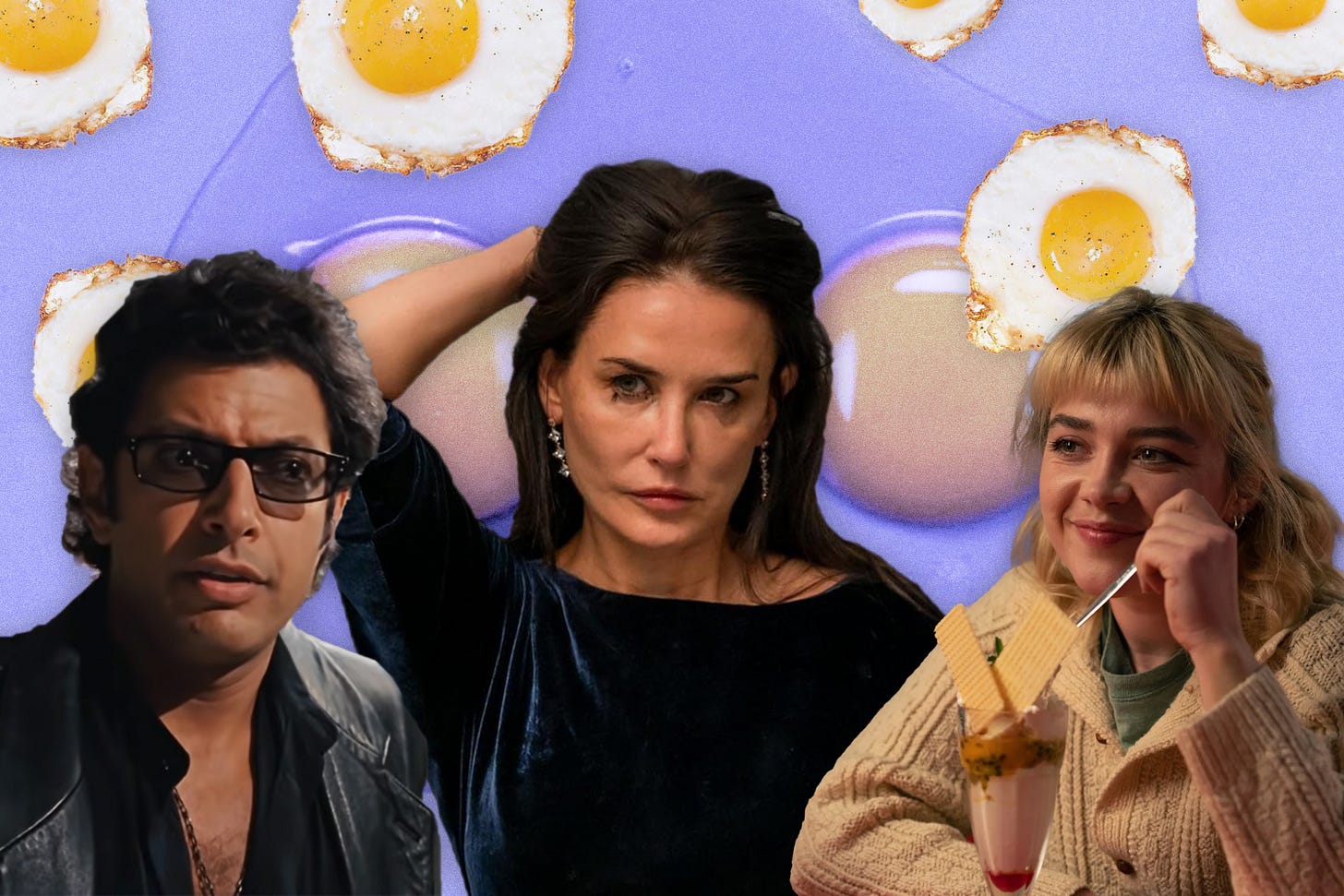
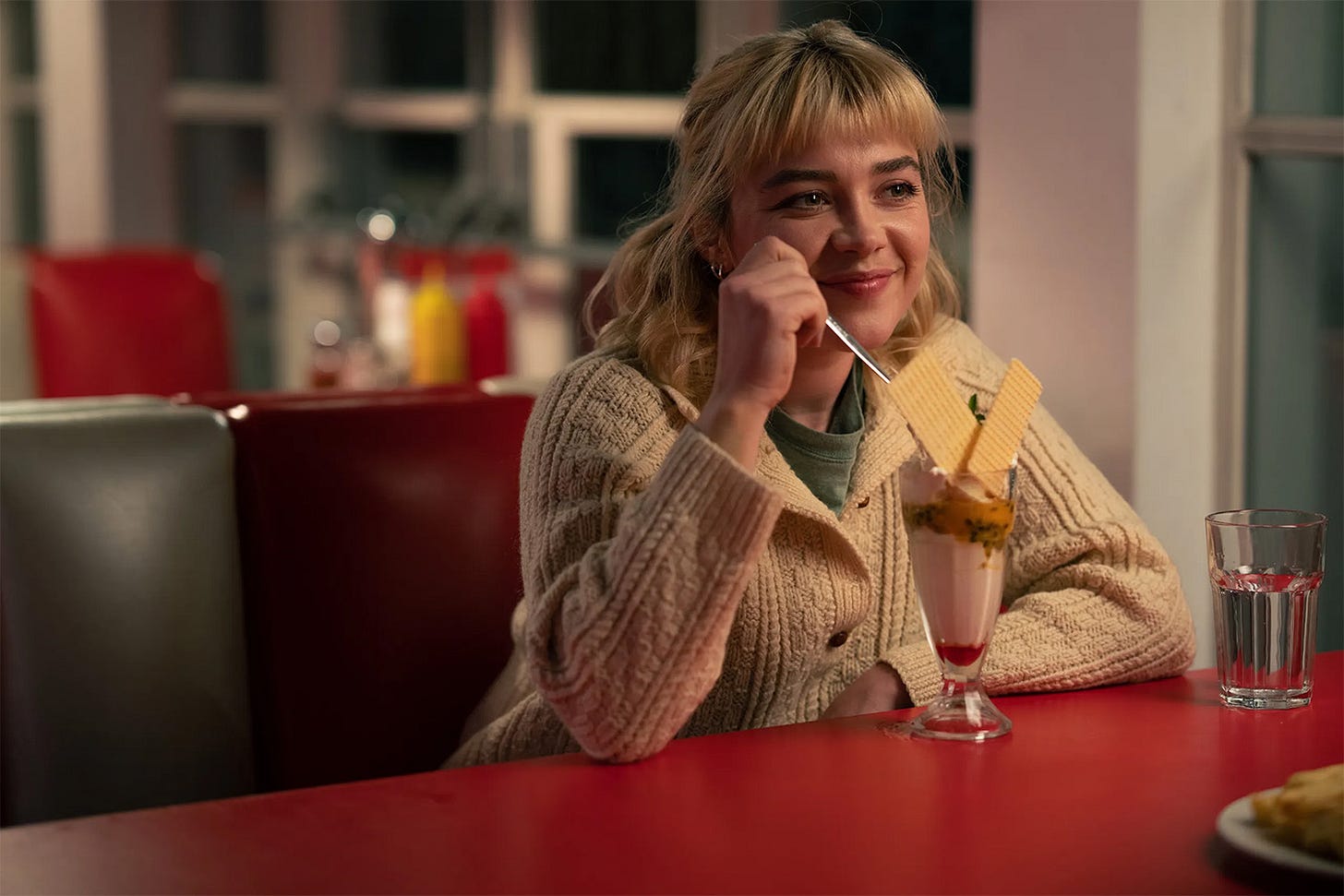
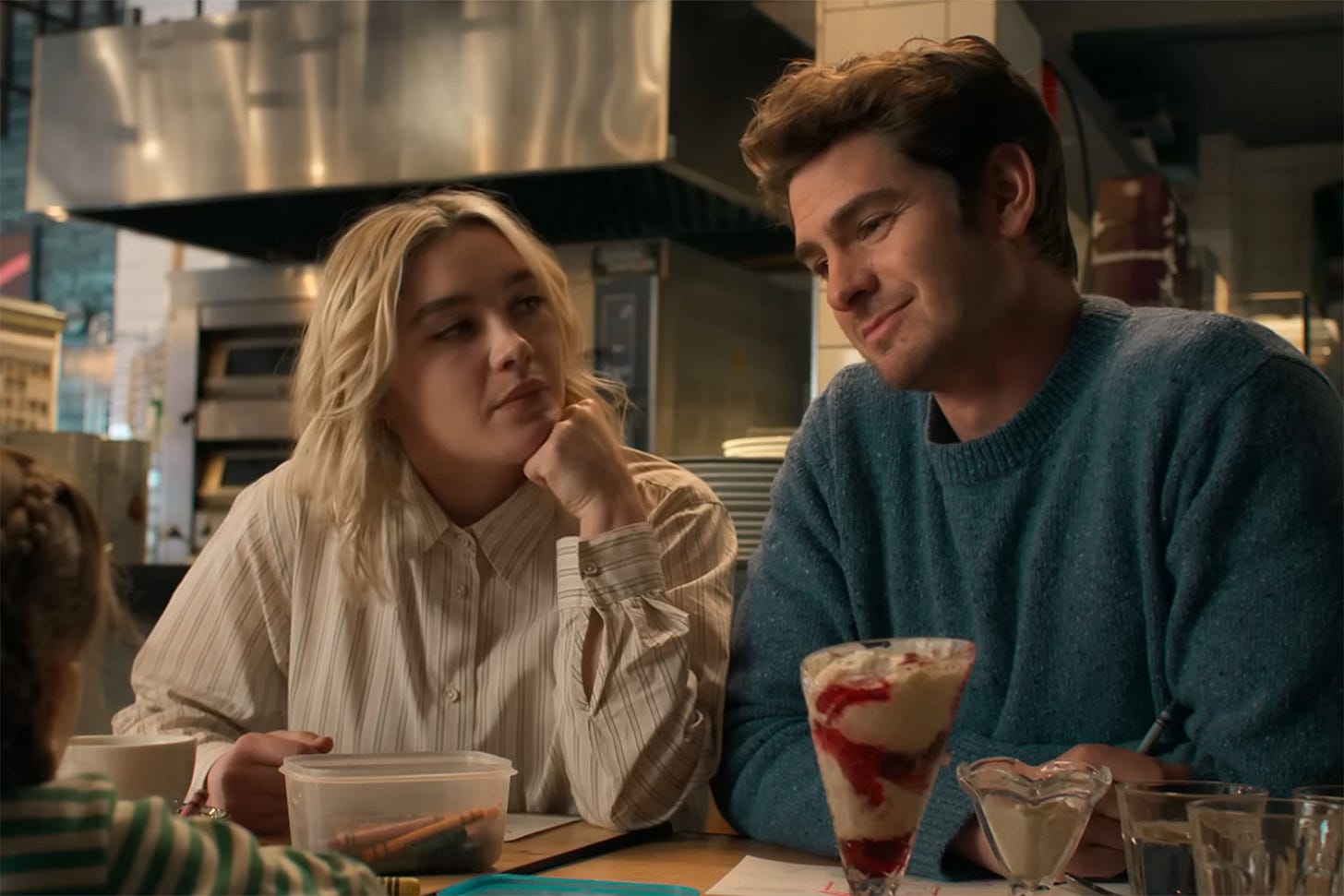
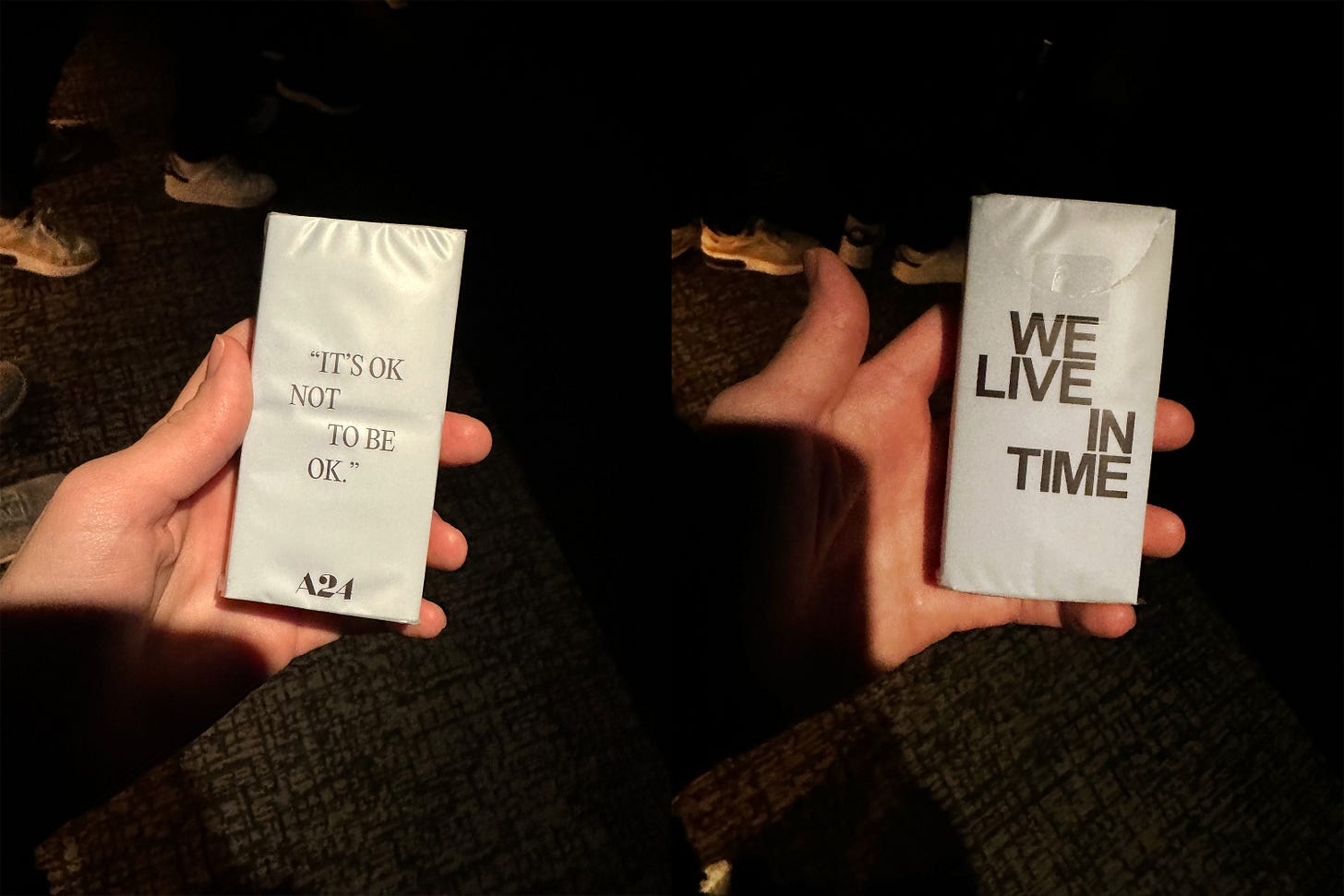
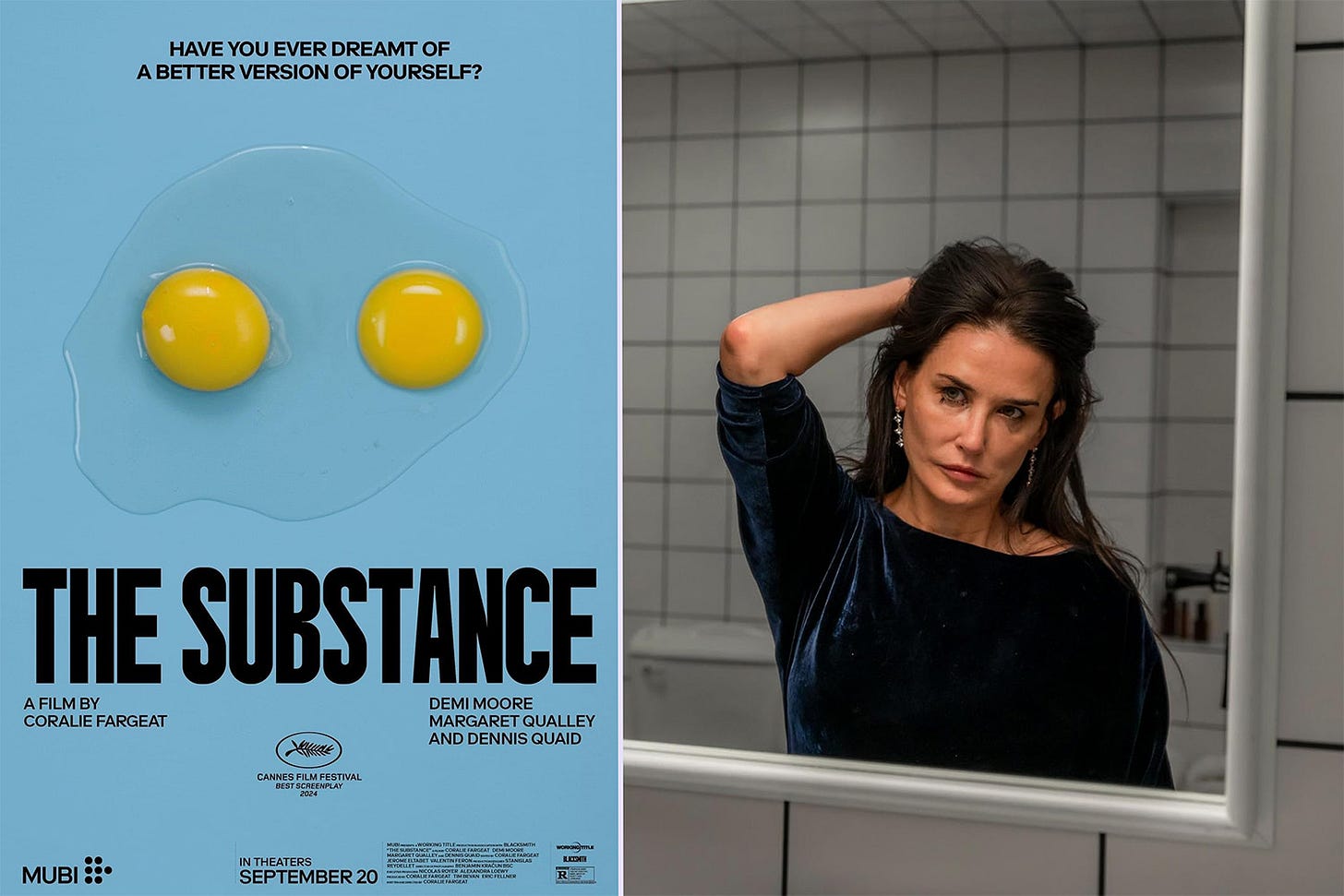
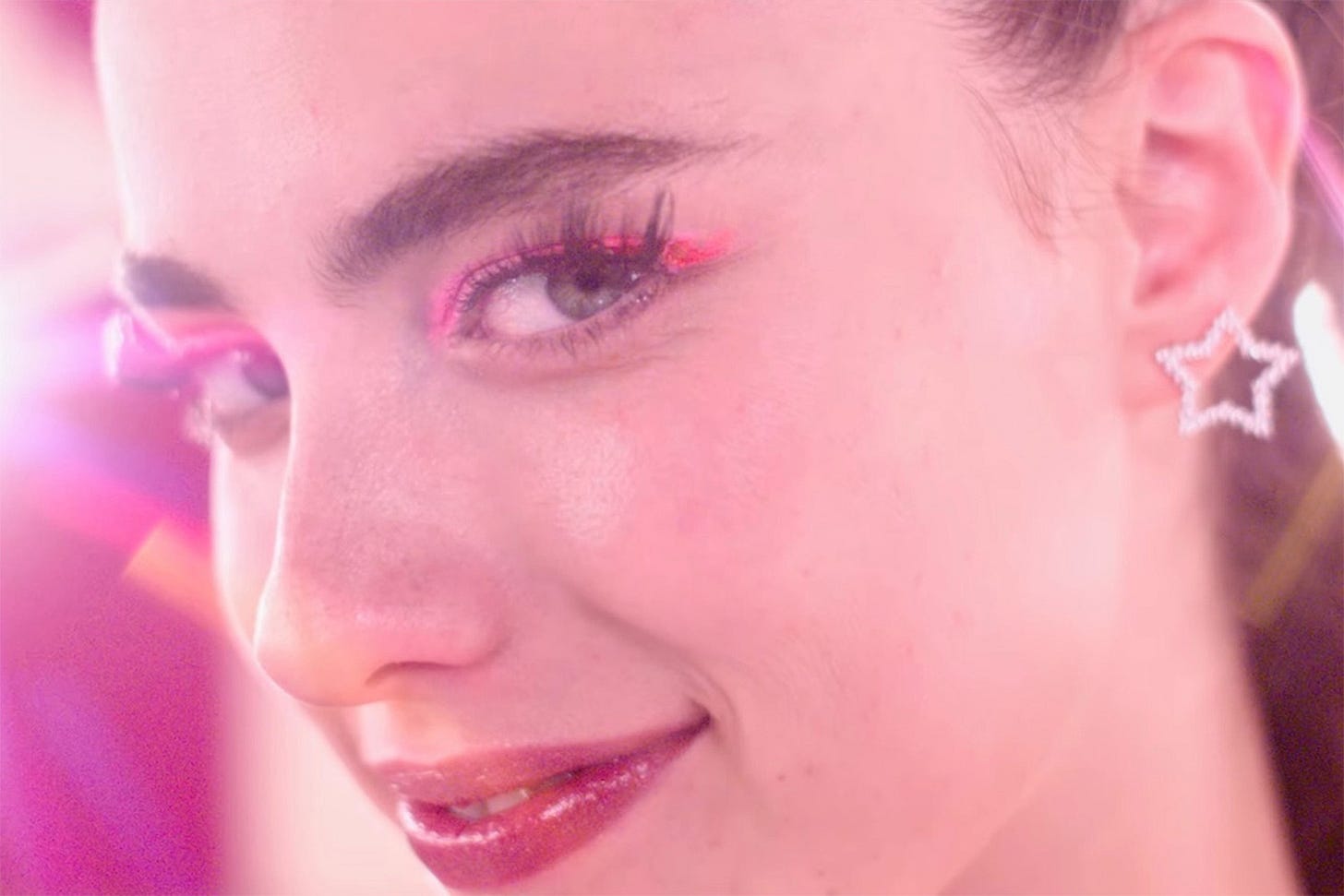
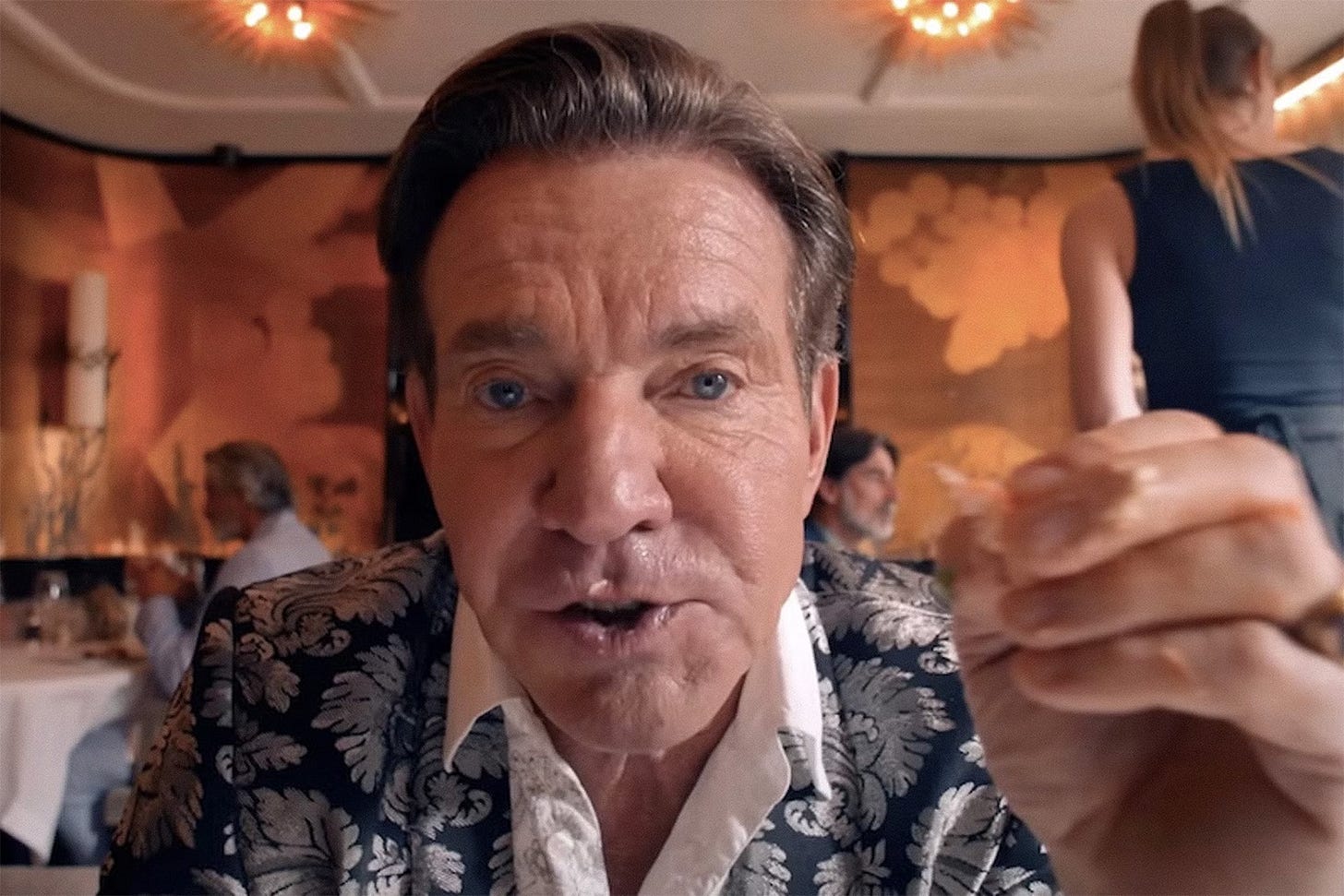
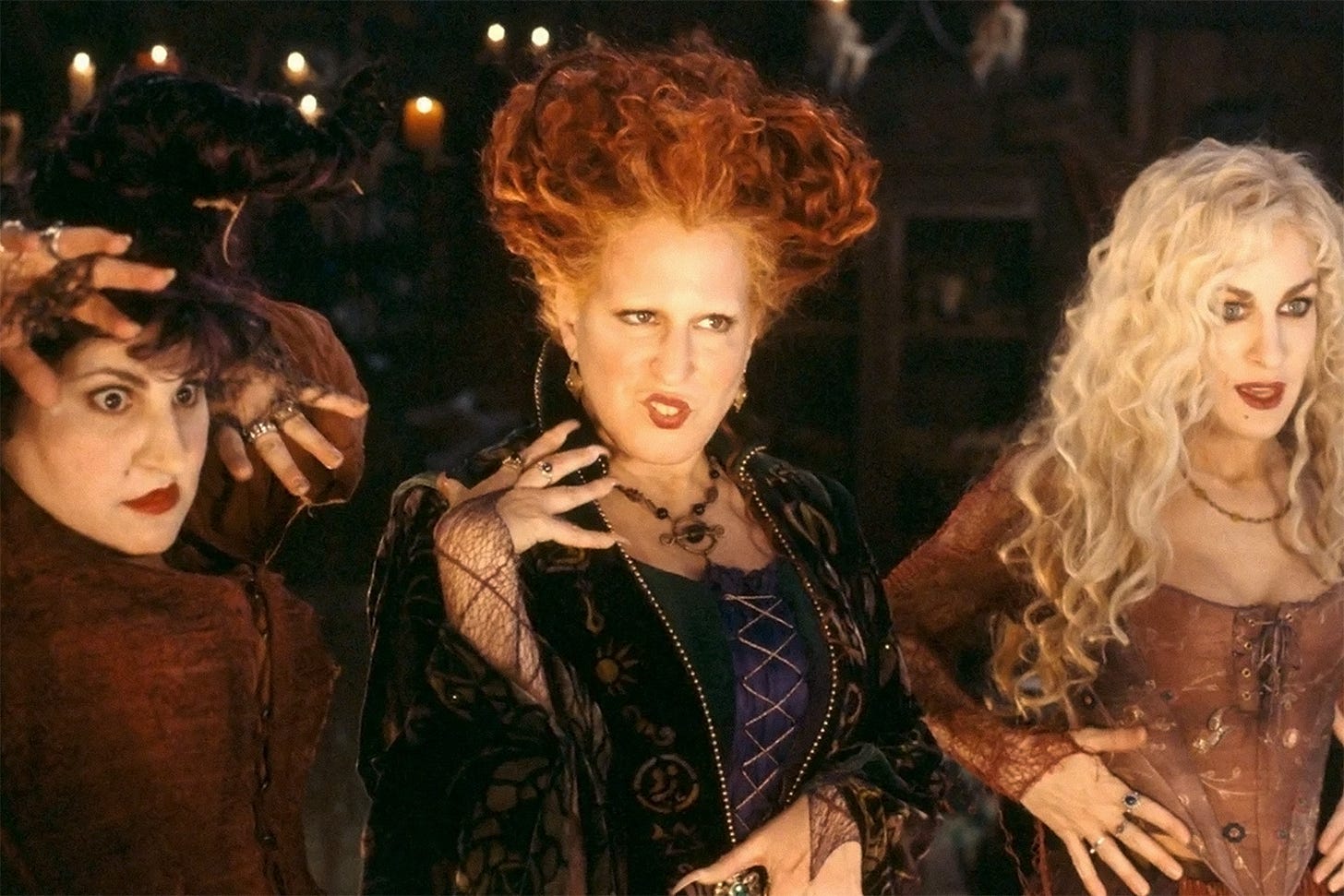
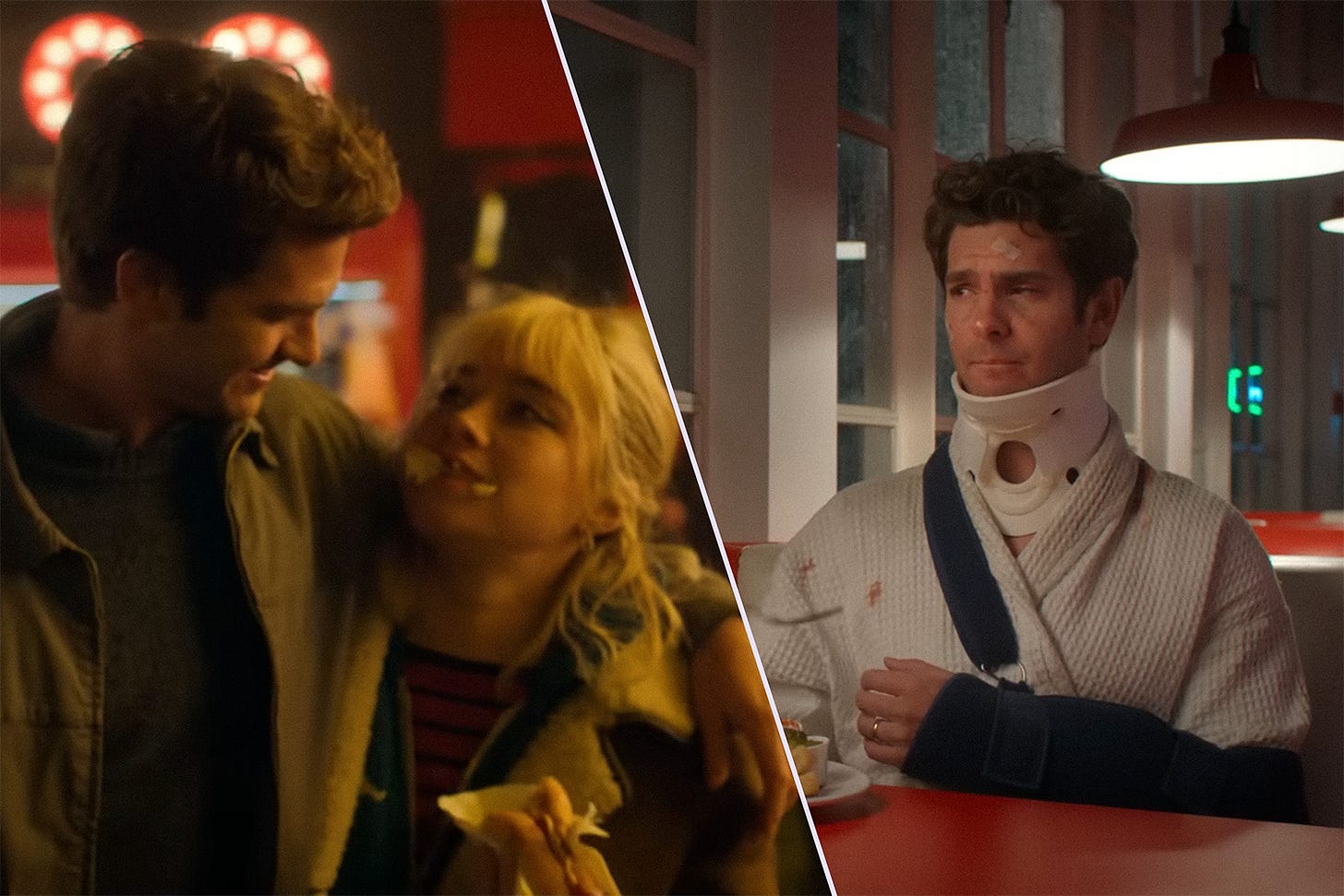
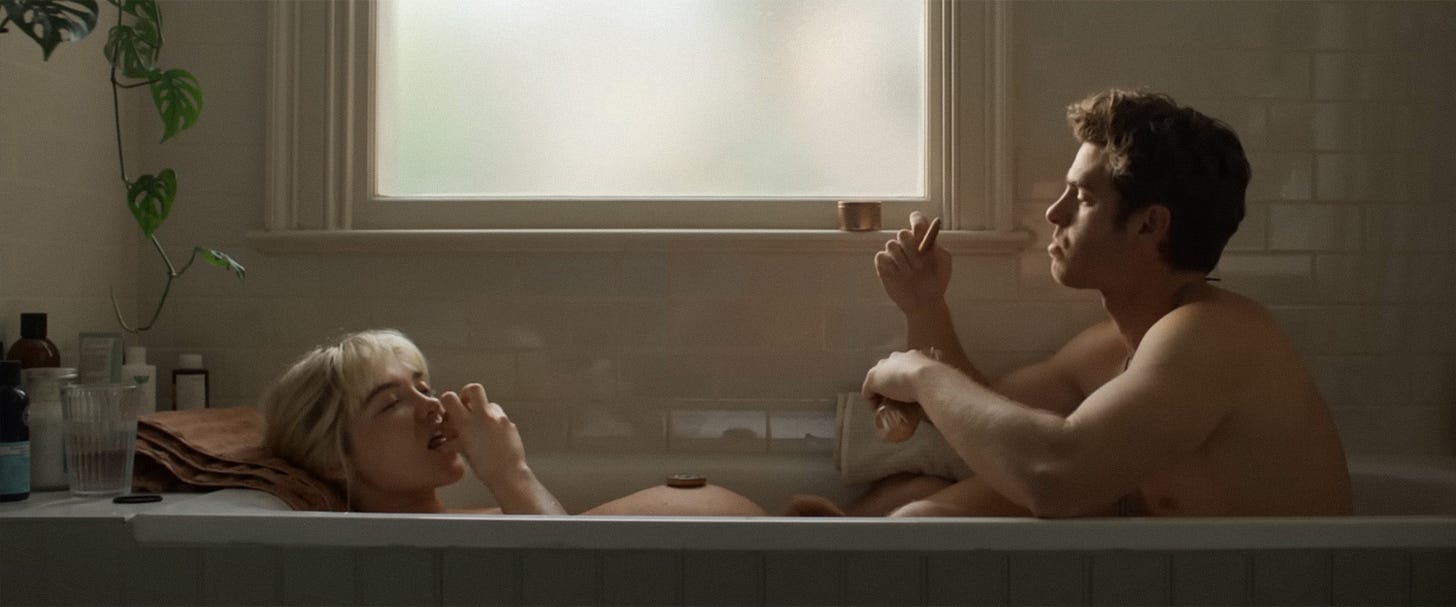
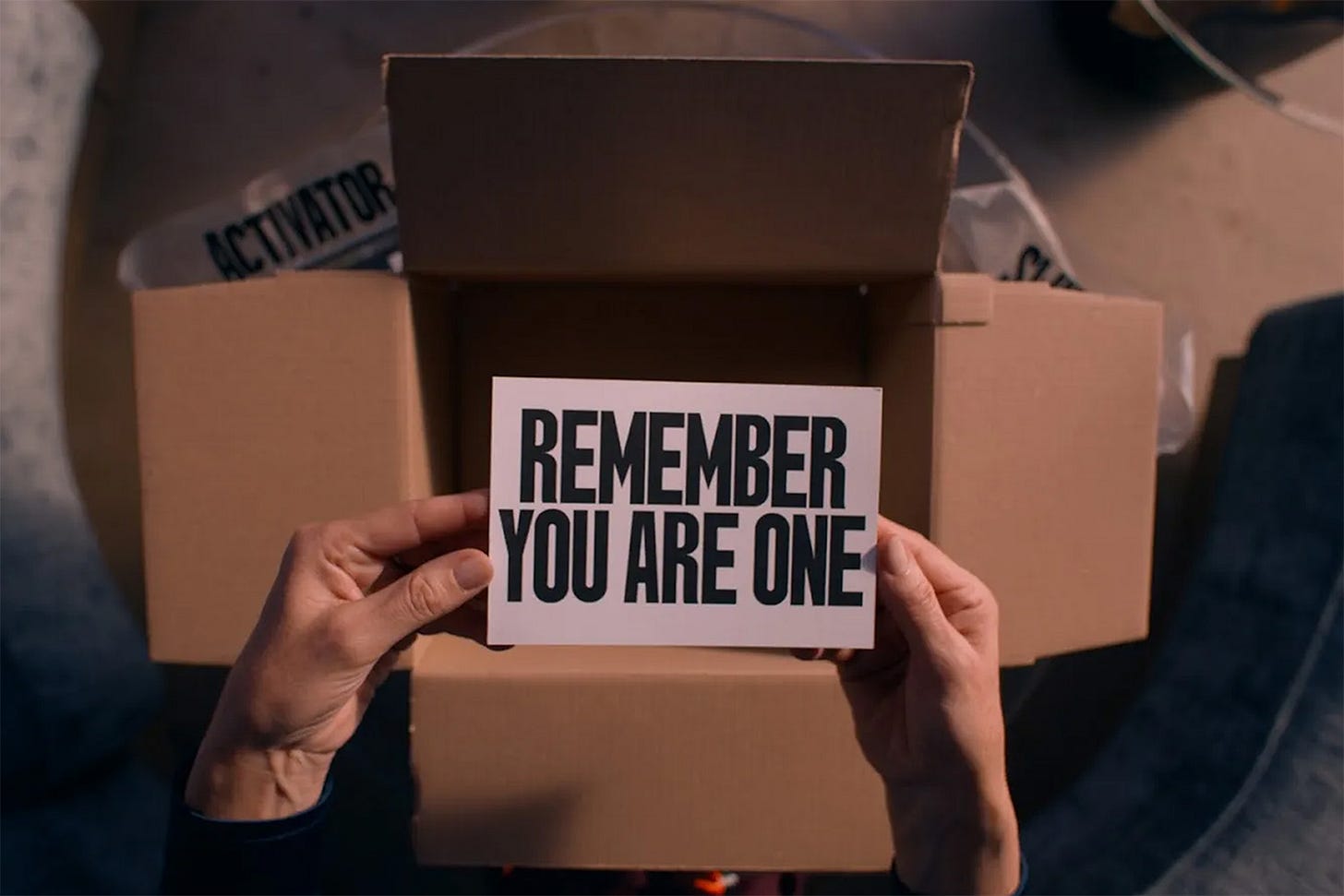
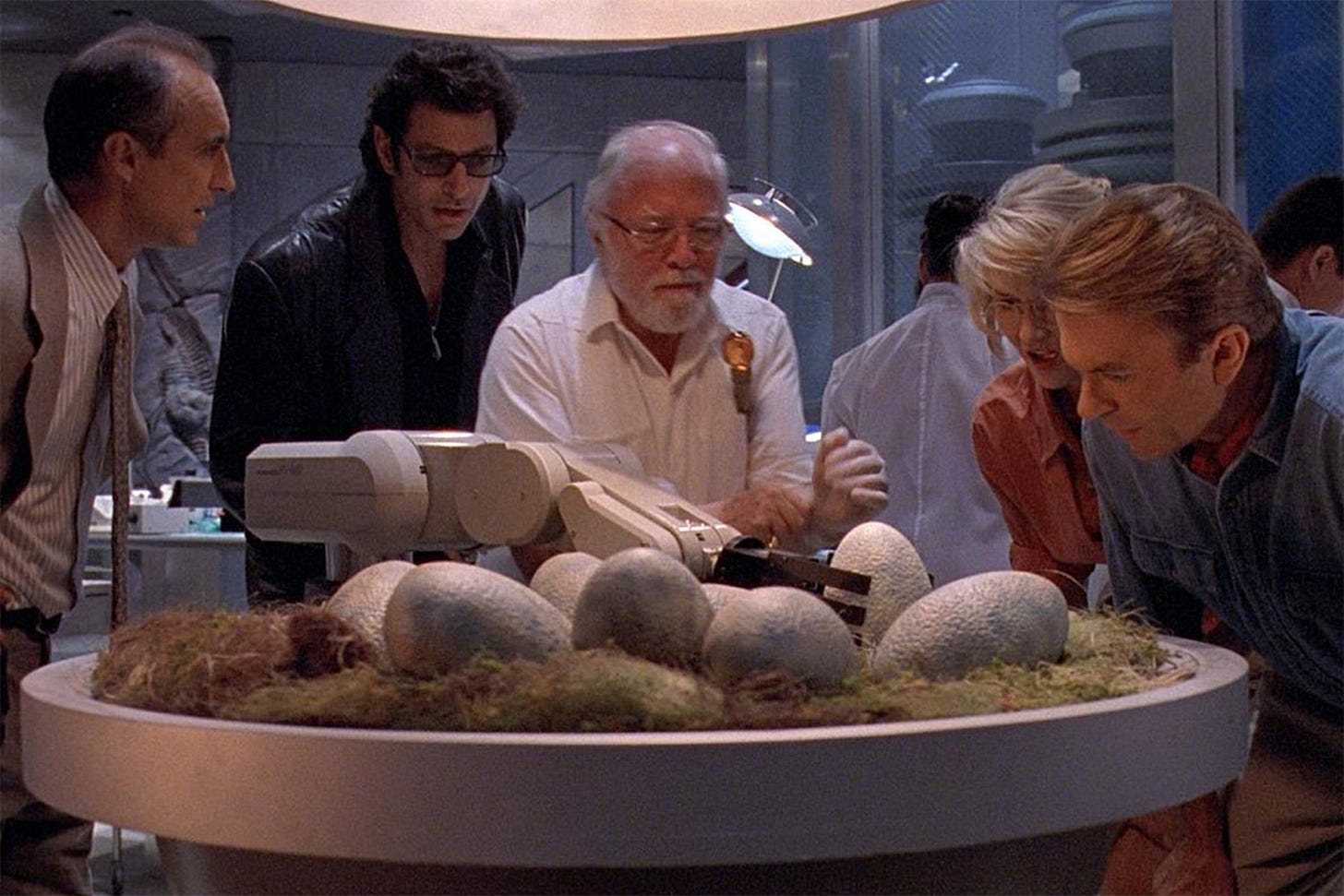
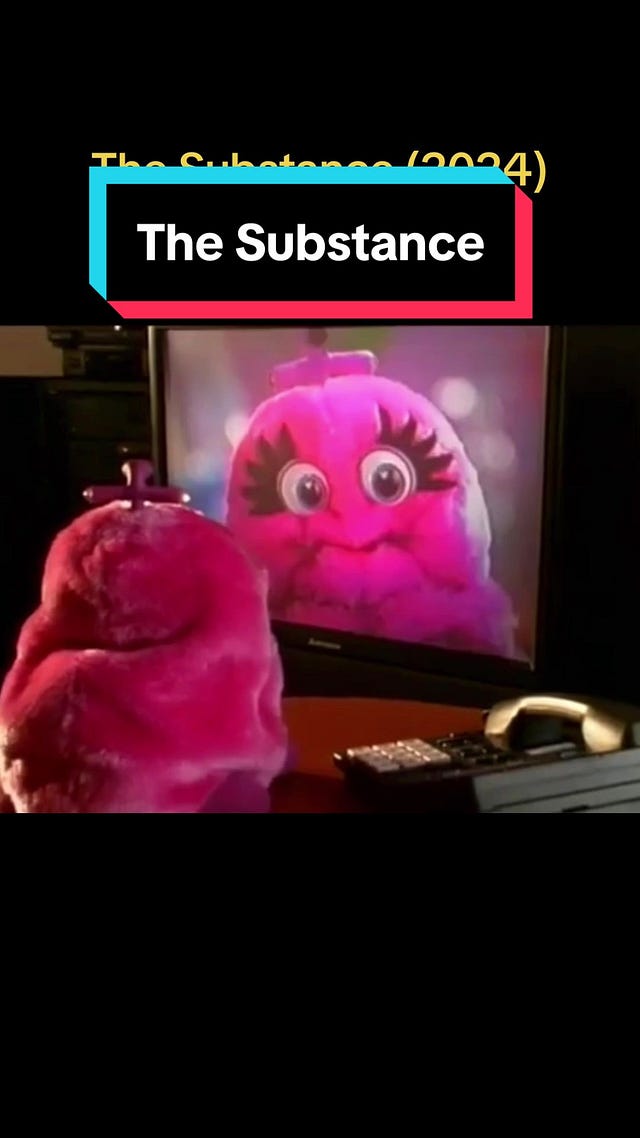

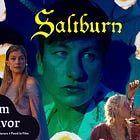

While I wouldn’t say it’s my favourite egg moment I feel like I have to mention the infamous egg kiss in Tampopo (1985).